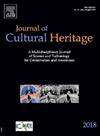Rapid discrimination modeling of common wine and food residues in archaeology based on machine learning and infrared spectroscopy
IF 3.3
2区 综合性期刊
0 ARCHAEOLOGY
引用次数: 0
Abstract
The study of wine and food residues in archaeology offers crucial insights into ancient diets and brewing techniques. Traditional detection methods, however, are often complex and time-consuming. Bridging the gap between excavation sites and laboratories is vital for enhancing real-time analysis and artifact preservation. This paper presents a non-targeted spectral fingerprinting method that integrates simulated experiments, Fourier Transform Infrared Spectroscopy (FTIR), and machine learning algorithms for the rapid identification of food and wine residues in archaeological excavations. Infrared spectral data were collected from 23 modern food and liquor samples subjected to simulated aging. A comprehensive preprocessing protocol was developed, including smoothing, baseline correction, and normalization, to reduce unwanted variability and enhance data quality. Eight spectral preprocessing methods were assessed, including standard normal variate (SNV), multiple scatter correction (MSC), and various derivative techniques. The final model, which employed SNV preprocessing, demonstrated superior prediction accuracy and robustness. Six common machine learning algorithms—linear discriminant analysis (LDA), decision tree classification (DTC), support vector machine (SVM), random forest (RF), k-nearest neighbor (KNN), and backpropagation neural network (BPNN)—were utilized for modeling and comparison. Results indicated that the RF, KNN, and BPNN models were particularly effective, achieving prediction accuracies near 100 %. In external validation with real archaeological samples and those simulated to be aged for nearly ten years, the BPNN model achieved a confidence estimate of 99 % for validating archaeological wine residue samples, while other models provided confidence estimates above 70 %. However, due to the significant loss of characteristic substances from prolonged aging, the current model has difficulty distinguishing specific wine or food types. Future research should focus on improving model portability for on-site screening and expanding the database of simulated aged residues through multi-platform collaboration.

基于机器学习和红外光谱的考古学中常见酒和食物残留物的快速识别建模
考古中对葡萄酒和食物残留物的研究为了解古代饮食和酿造技术提供了重要的见解。然而,传统的检测方法往往是复杂和耗时的。缩小挖掘地点和实验室之间的差距对于增强实时分析和文物保存至关重要。本文提出了一种非目标光谱指纹识别方法,该方法将模拟实验、傅里叶变换红外光谱(FTIR)和机器学习算法相结合,用于考古发掘中食品和葡萄酒残留物的快速识别。对23份现代食品和白酒样品进行了模拟陈酿,并采集了红外光谱数据。制定了全面的预处理方案,包括平滑、基线校正和标准化,以减少不必要的变异性并提高数据质量。评估了8种光谱预处理方法,包括标准正态变量(SNV)、多重散射校正(MSC)和各种衍生技术。采用SNV预处理的最终模型具有较好的预测精度和鲁棒性。利用线性判别分析(LDA)、决策树分类(DTC)、支持向量机(SVM)、随机森林(RF)、k近邻(KNN)和反向传播神经网络(BPNN)等六种常见的机器学习算法进行建模和比较。结果表明,RF、KNN和BPNN模型特别有效,预测精度接近100%。在真实考古样本和模拟陈年近十年的考古样本的外部验证中,BPNN模型对考古酒残留样本的验证置信度估计为99%,而其他模型的置信度估计在70%以上。然而,由于长时间陈酿导致特征物质大量流失,目前的模型难以区分特定的葡萄酒或食物类型。未来的研究应侧重于提高模型的可移植性,以进行现场筛选,并通过多平台协作扩大模拟老化残留物数据库。
本文章由计算机程序翻译,如有差异,请以英文原文为准。
求助全文
约1分钟内获得全文
求助全文
来源期刊

Journal of Cultural Heritage
综合性期刊-材料科学:综合
CiteScore
6.80
自引率
9.70%
发文量
166
审稿时长
52 days
期刊介绍:
The Journal of Cultural Heritage publishes original papers which comprise previously unpublished data and present innovative methods concerning all aspects of science and technology of cultural heritage as well as interpretation and theoretical issues related to preservation.
 求助内容:
求助内容: 应助结果提醒方式:
应助结果提醒方式:


